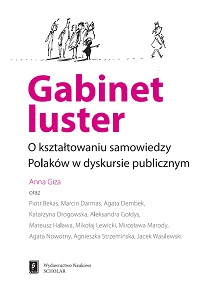

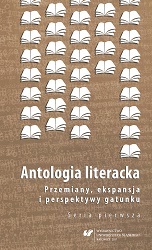
Keywords: anthology; copyright; fair use; legislation; a collection of works
The article is a meticulous analysis of the legal status of the anthology as regulated by the Polish Copyright and Related Rights Act from 4th Feb 1994. It consists of two parts: the first one characterizes the anthology as the subject of the Copyright as defined by the art. 3 of the Copyright Act, that is as a collection of works. These reflections pivot around the attempts at situating such works amongst other forms protected by Copyright norms, and defining what rights and obligations follow publishing a compilation. The second section of the paper is focused on the institution of allowed public use as applied to the anthology – in this part discussed are the theoretical and axiological assumptions that lie at the foundations of limiting the authors’ monopoly with respect to protected works, as well as the premises, whose fulfillment is the legal precondition of publishing collections of works and other materials.
More...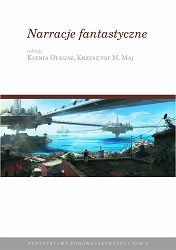
Keywords: utopia;utopia and dystopia;utopia and heterotopia;dystopian film;dystopian city;topography;urban space;urban space and place;
Monika Rawska’s chapter focuses on two modern movies "Equilibrium" (dir. Kurt Wimmer, USA 2002) and "Inception" (dir. Christopher Nolan, USA—Great Britain 2010) with an analysis of the city spaces depicted in these films. Progress is the basis of the analysis. Progress is the impulse pervasive in utopias and it is an important motivator for human actions presently perceived as negative—imperialism, colonialism, racism. Margaret Mead’s notion that Utopia should be seen as a historical category while revealing an essential ambivalence is well summarized in her work, “One man’s dream is another man’s nightmare”. This is also represented in select films depicting a new society with a visual representation of order. For example, in Libria and architect’s city both of which were created with a positive and beneficial premise, though over time they became a burden for the characters. Change in perception of reality is one of the significant elements in dystopian narratives, that are also present in film adaptations, in what Ludmiła Gruszewska-Blaim calls a „utopiacrime”. Libria is depicted as the only city in the world in the film, "Equilibrium". Libria is a dystopian cityfortress contrasted with the surrounding Nether and an appropriated enclave space of Offenders. It functions as a simulacrum of the past at a time before the war. The film vision of the future is an intertextual collage of conventional representations of the totalitarian organization of both space and society. Dream city is the creation of an architect couple in the film, "Inception". It is a very different space, imagined and fictional and it perfectly captures the impossibility of utopia as revealed by its very name that means non-space. Reality, which the couple created for themselves, demonstrates an interesting tension between the architectural utopia and the solitary eutopia as well as a conflict of planner vs. wanderer (as described by Michel de Certeau). In both movies the city space becomes a threat in spite of its projected function as a safe and/or familiar space. In "Equilibrium", it imposes on and disciplines its inhabitants as tools of the state. In Inception, the city is the accumulation of the protagonists’ entire world and it turns unto its own ruin, a memory maze swallowed by the sea.
More...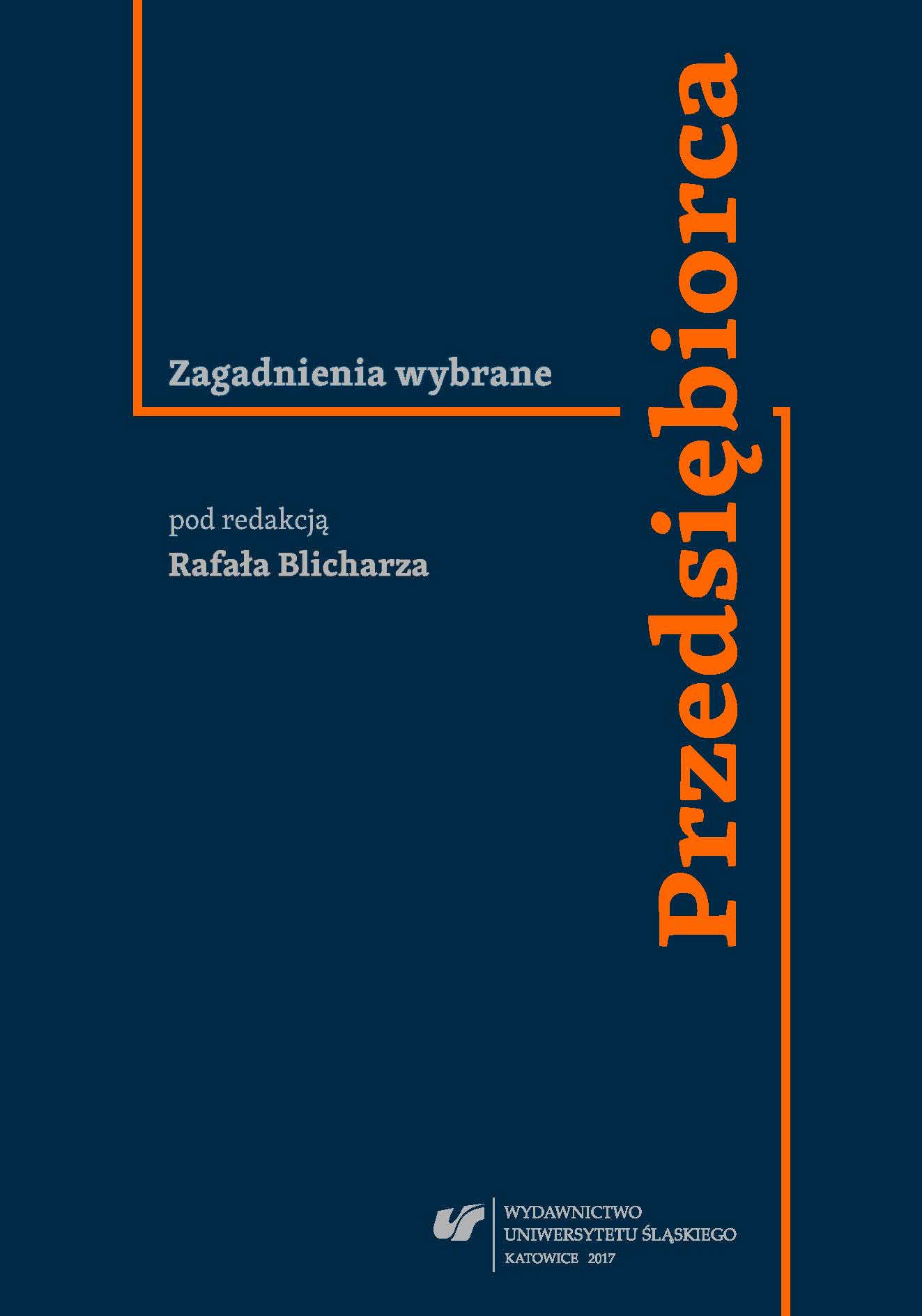
This article contains a review of various economic registers. The author proposes a practical recording process and details a step-by-step plan of how to start a register of big and small enterprises in Poland. He also provides a great deal of information about problems with the registration of limited liability companies and other organizational forms that carry out economic activity. The final part offers interesting facts concerning special registers which include current debtors. The differences between these and other types of registers have been explained.
More...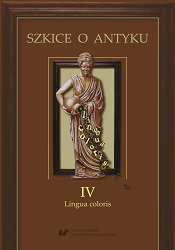
Keywords: colour; mosaics; painting; imitation; art
The colour programme of the Aleksander Mosaic has not been the subject of separate studies so far. Researchers take up this issue when analyzing the statements of Pliny (in his „Natural History”) about the palette of four colors and the so-called colores floridi and colores austeri. Assuming that the Mosaic is a copy of a lost painting of Philoxenus of Eretria, I try to prove that the use of four colors resulted from an artist’s assumption that the pigments must be subordinated to the whole composition and should not dominate it, which was a condition for a well-understood art of imitating of nature. This conviction is in line with the remarks of many ancient thinkers, including Aristotle, although – as Vitruvius and Pliny testify – it was not scrupulously kept by ancient painters.
More...![Recording of the promotion of Janusz Mariański’s book Kondycja religijna i moralna młodzieży szkół średnich w latach 1988–1998–2005–2017 (raport z ogólnopolskich badań socjologicznych) [Religious and moral condition of secondary school youth]](/api/image/getbookcoverimage?id=document_cover-page-image_791649.jpg)
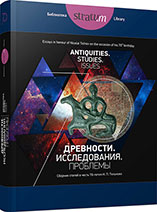
Keywords: Moldova; Great Migration period; Slavs; fibulae; mirrors
A fibula of the Bratei (Bratei-Brigetio) type was found in the Slavic settlement of Selişte. The brooches of this type are common from Gallia to Don in the Great Migration period, most finds originate from the Middle Danube basin. This clasp belongs to the female costume of the East German tradition and dates back to the middle of the 5th century. Mirror from Hansca is of the Chmi-Brigetio type, spread from the Rhine to the Caucasus to Volga-Ural region. In this case, apparently, it dates back to the 5th century (like most mirrors of this type) and is associated with the early Slavic horizon. Perhaps, its presence in the Slavic settlement marks the time of the appearance of the Slavs in the territory of Moldova.
More...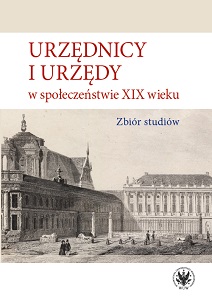
Keywords: official deontology; professional ethics of officials; constitutional Kingdom; administration in a constitutional state
The period of the constitutional Kingdom, especially in the years of 1818–1820, was the time of creating norms, ethical standards and discussions on official deontology. The sources point out that attitudes towards professional ethics and ethical behaviour were very diverse. According to the literature on this subject, the bad financial situation of Russian officials was one of the important factors determining the scale of corruption. But it is worth looking for other factors: education, school and family attitudes, ethical family traditions, environment, and religious beliefs. Shaping the ethical standards of an official was accompanied by a public discourse concerning the organization of the administration and its functions in the constitutional state. The constitution, the parliament, freedom of the press were perceived as important elements affecting the moral picture of the authorities. However, there was no complete freedom of the press and public expression in the constitutional Kingdom – this essential element was lacking in shaping ethical behaviour, application of ethical theories and norms.
More...
Keywords: modernization of Egypt; Muhammad Ali; Poles in Egypt; Egyptian bureaucracy
In the period between Napoleon’s Egyptian campaign and the outbreak of World War I Egypt underwent a rapid modernization. Pashas of Egypt drew inspiration mainly from Europe, however they managed to imitate the West only superficially. In the 19th century, Egypt developed neither the bureaucratic system in the modern meaning of this term nor the political culture. The changes in Egypt were witnessed among others by the Poles arriving there as tourists, emigrants, pilgrims or patients. The Egyptian bureaucracy, became the subject of their numerous descriptions. In this paper, the Polish accounts of the Egyptian officials both at the central and local levels are compiled. They depict the Egyptian administration as an ineffective system generating numerous malpractices. The reasons for that were sought in the rulers’ erroneous policy, in the innate qualities of Egyptians themselves though to be incapable of adopting civic attitudes by their very nature, and also in activities of the Europeans who had made their fortunes and careers on the Nile not caring much for the natives.
More...
Keywords: Alexei Sidorov; censor; Russian historiography; Russian ruling elites; Polish national identity; tsarist imperial policy
Alexei Sidorov was an advocate of a strong Russian Empire with the centralized administration. He can also be considered an advocate of the modern state, which, according to him, meant the ability to use social communication techniques (the press) and infrastructure (hard roads, railways) to achieve specific strategic objectives. According to Sidorov, the main institution responsible for the social policy was a monarchy. Thus, he was not a supporter of a form of statehood associated with Polish identity based on representative institutions, control of king’s power, participation of society in decision-making, etc. These ideas were foreign to the Russian state and national identity. While praising peaceful, civilization imperialist activities, at the same time Sidorov admired the colonizers of the Polish lands who successfully employed military methods. His case proves that among the Russian elites there were attitudes reluctant to the Polish identity and to any attempts to change the political status of the Polish lands remaining within the Russian borders.
More...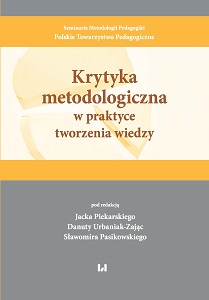
Keywords: methodology;critique;methodological critique;practice;patterns of practicing scientific critique
The aim of the study is to reconstruct various ways of understanding methodological critique as a practice of knowledge creation and to indicate, revealed in connection with the reconstruction, the possibility of identifying cognitive obstacles that arise in this practice. Methodological critique is understood as a kind of practice – the field of thinking and acting – related to the experience and rationalization of the gap between the obviousness (faith) and the uncertainty of beliefs about reality. Various ways of formulating critique, related to the treatment of critique as the value underlying the ideal of rationality of science as well as a communication strategy, are discussed. Different ways of understanding critique legitimated under the distinguished concepts of methodology (as the theory of the application of laws of logic in various areas of research and a specialized discipline concerning the place of science in the system of human knowledge), are also discussed. On this basis, the possibilities of practicing a "critical methodology", designed as a study of methods for criticizing scientific practice in the changing cultural framework, are considered. In connection with the identified processes of their change (institutionalization of science, corporatization and networking of research), patterns of practicing critique justified by methodological premises (dogmatism, conventionalism and tactical discretion) were reconstructed and confronted with the cultural patterns of critique formed on their basis (inhibition, tolerantism and presentism).
More...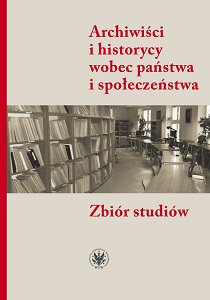
Keywords: Michał Bobrzyński; Stanisław Kutrzeba; Marceli Handelsman; Adam Próchnik; Michał Sokolnicki; Stanisław Bukowiecki
The rebirth of the statehood inspired reflections on the causes, sources, course and consequences which led to this momentous event. Attempts to answer the questions: why and how it was possible to regain sovereignty, and what factors were crucial for it, were present in many literary, philosophical and political texts. Historians, exploring the past, also belonged to this group reflecting on the rebirth of Poland. Their deliberations in historical works and their determinants took numerous narrative forms, were caused by different motives and used various research methodologies. In the reborn Polish state there were many milieus interested in the past and conducting research on it. Discussions about historical methodology used in the analysis of regaining sovereignty by Poland led to the identification of problems which occurred during the process. Most historians believed that numerous factors were responsible for historical processes. Only few of them, including Michał Sokolnicki, were inclined to look for just one element. Perceiving historical processes as the result of only one factor often entailed using history in current politics. Such an attitude enabled forming simple theories, which could be possibly used in political manifestos. Pointing to many different factors influencing history is the result of striving for objectivity while researching and narrating the past, even if it establishing their hierarchy is extremely difficult. Such a research approach contributes to showing complexity of historical process.
More...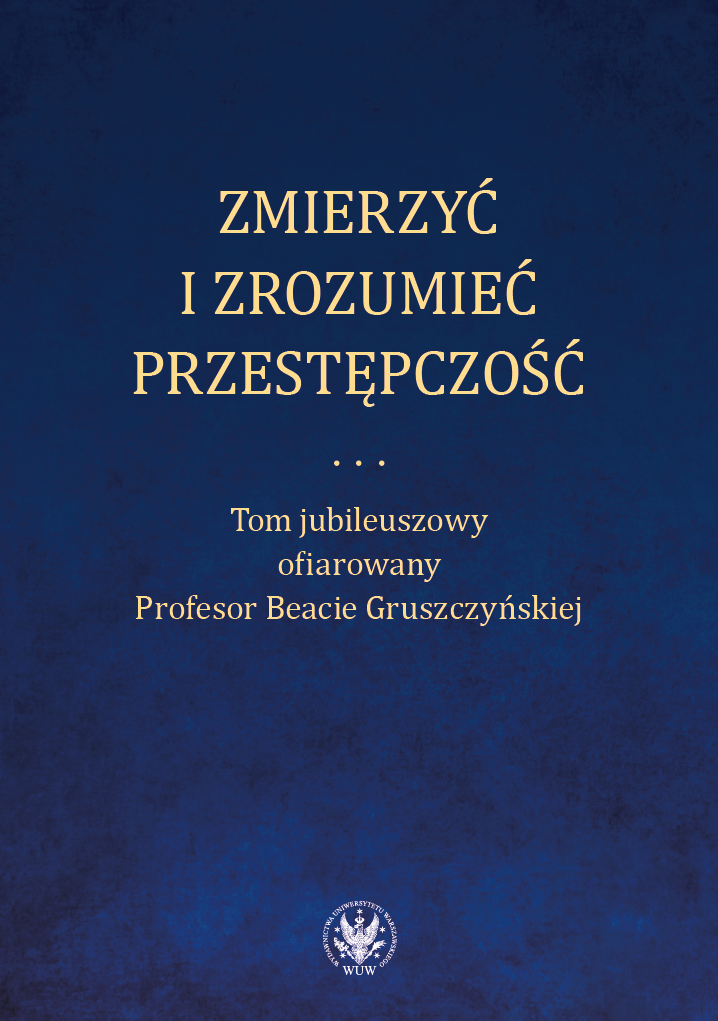
Keywords: criminology; crime statistics; crime; woman abuse; prison sentence; victim
A study on criminology prepared to celebrate the jubilee of Professor Beata Gruszczyńska. The authors perform a criminological analysis of crime statistics, explore crime against women and cybercrime, describe crime in contemporary Ukraine and Russia and reflect on prison sentences and capital punishment.
More...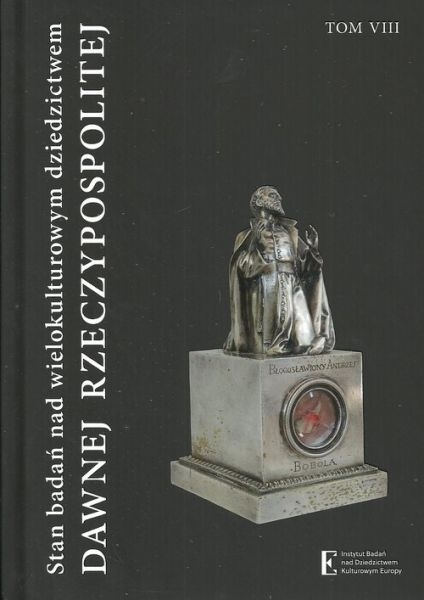
Borderland areas continue to be the object of reflections and studies. Oneexample of the changing scope of research on borderland areas is the study ofthe Lviv School of Architecture. The article presents the development of theconcept of the Lviv School of Architecture and the change in the scope of research:its extension to cover more and more areas and phenomena.The Lviv School of Architecture includes architects working and educatedin Lviv who graduated from the Technical School functioning there since 1844(in the years 1918–1939 known as the Lviv Polytechnic) or the graduates of theArts and Industry School in Lviv (of lesser importance). The term ‘Lviv Schoolof Architecture’ referred to artists working in Lviv and in nearly all Central Europe.The influence of this school of architecture actually covered any area wherearchitects educated and developed in Lviv were working. The representativesof the Lviv circle worked in many borderland areas, but the influences of theLviv School of Architecture were the strongest in the northern and southernlands (Pomerania, Gdynia, Vilnius region) and dominated in the eastern andwestern lands (Silesia, former Galicia).Recently, the scope of study of the Lviv School of Architecture has beensignificantly extended. Analyses did not only focus on the architecture of the19th century and the early 20th century, but also on works created later, in theinter-war period and after WWII. The most important works concerning thesubject are presented in this article.
More...
The St. Nicholas Church of the Basilian monastery in Krekhiv, recentlydescribed in a historical monograph by Petro Szkrabjuk, has never been a subjectof interest of art historians. Dispersed but quite complete documents ofKrekhiv Basilian monks allow the analysis of the history of church modernization,not only providing important facts about the history of the complexbut also a lot of information about the artists that worked at it. Most of themcan be identified and attributed to other works, which helps supplement theirartistic output or popularize their activity.
More...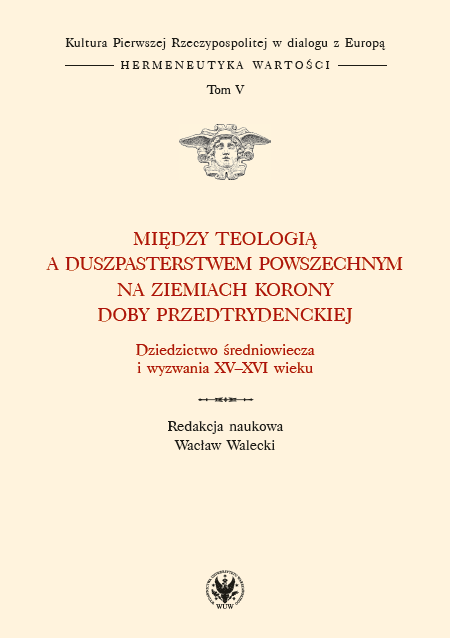
Keywords: pre-Tridentine culture values; pre-Tridentine spirituality; pre-Tridentine piety; religious communities; humanism; renaissance
An attempt to reconstruct the sources and describe the spirituality profile of selected Polish religious communities in the European context. It consists of dissertations presenting the basic determinants of the value of Polish pre-Tridentine culture in terms of spirituality and piety. In subsequent articles, the authors describe selected values (religious, political, ethical, aesthetic), referring to new, unique sources, not yet analyzed at all or considered from a research perspective other than that adopted by the authors. Eucharistia, Exegesis, Pietas, Devotio, Penitentia, Indulgentia, Paideia, Paupertas, Memoria - these are selected concepts on the basis of which the authors try to show the central idea of the entire project on the culture of the First Republic in dialogue with Europe and hermeneutics of values: scope, directions and methods the mutual flow of reflection in Polish and European culture - here in relation to the pre-Tridentine era and in the face of the emerging challenges of humanism during the Renaissance. The 12-volume series of monographs Kultura First Rzeczpospolitej in dialogue with Europe. The Hermeneutics of Values ”presents the cultural heritage of the 15th and 18th centuries as an integral but original part of European culture. The research goal is to identify the ways and forms of the mutual transmission of aesthetic, political and religious values and to present in a broad, multilateral comparative context the axiological structure of the Polish culture of old times. Cultural texts are examined from an internal perspective as records of acts aimed at understanding values, and from an external perspective as statements that join European literary-aesthetic, political and religious discussions. In an intense dialogue, the culture of the Republic of Poland shows not only a receptivity to new ideas, but also creativity and dynamism in operating in Europe.
More...
Keywords: pre-Tridentine culture values; pre-Tridentine spirituality; pre-Tridentine piety; religious communities; humanism; renaissance
An attempt to reconstruct the sources and describe the spirituality profile of selected Polish religious communities in the European context. It consists of dissertations presenting the basic determinants of the value of Polish pre-Tridentine culture in terms of spirituality and piety. In subsequent articles, the authors describe selected values (religious, political, ethical, aesthetic), referring to new, unique sources, not yet analyzed at all or considered from a research perspective other than that adopted by the authors. Eucharistia, Exegesis, Pietas, Devotio, Penitentia, Indulgentia, Paideia, Paupertas, Memoria - these are selected concepts on the basis of which the authors try to show the central idea of the entire project on the culture of the First Republic in dialogue with Europe and hermeneutics of values: scope, directions and methods the mutual flow of reflection in Polish and European culture - here in relation to the pre-Tridentine era and in the face of the emerging challenges of humanism during the Renaissance. The 12-volume series of monographs Kultura First Rzeczpospolitej in dialogue with Europe. The Hermeneutics of Values ”presents the cultural heritage of the 15th and 18th centuries as an integral but original part of European culture. The research goal is to identify the ways and forms of the mutual transmission of aesthetic, political and religious values and to present in a broad, multilateral comparative context the axiological structure of the Polish culture of old times. Cultural texts are examined from an internal perspective as records of acts aimed at understanding values, and from an external perspective as statements that join European literary-aesthetic, political and religious discussions. In an intense dialogue, the culture of the Republic of Poland shows not only a receptivity to new ideas, but also creativity and dynamism in operating in Europe.
More...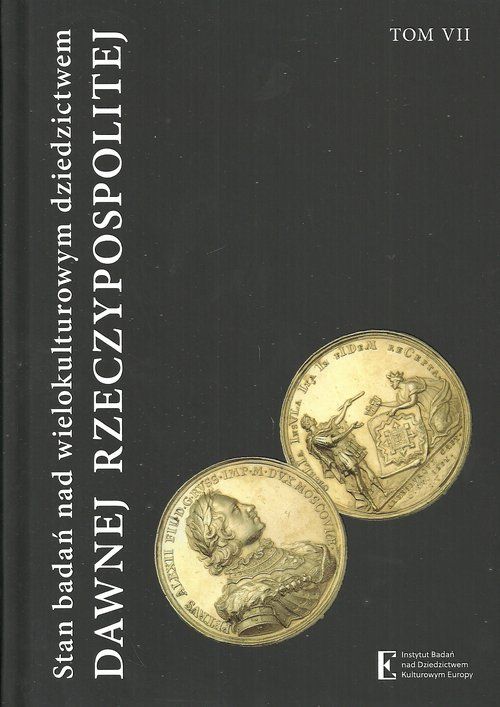
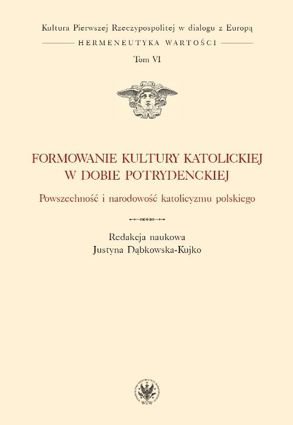
Keywords: Sarmatian piety; counter-reformation in Poland; post-Tridentine religiosity
Volume VI of the series shows not only the peculiarity of the religious culture of the First Republic, the character and specificity of the "Sarmatian" piety, but also reveals the main paths of development of this culture in connection with the thought developed in parallel by Catholic thinkers and writers in Western Europe. The research focused on the issues of opening up Polish post-Tridentine culture to the dynamics of the development of religious thought in other European countries, the ability to conduct dialogue with a foreign culture, and the possibility of adaptation, assimilation and transformation of foreign theories or ideas for the needs of indigenously Polish culture. The authors of individual dissertations try to answer the questions, on the one hand, about the scope and degree of involvement of Poles in the process of renewal of Catholicism in Europe, about their participation in European discussion forums, about the knowledge of Sarmatian writings and the impact of these writings in countries where it was particularly clearly shaped the model of the post-Tridentine renewal of the Church and Catholic religious culture, on the other hand - about the ways of fresh counter-reformation ideas entering the Republic of Poland, the absorption, demand and methods of introducing conciliar decisions into the practice of religious life and the writings of the post-Tridentine times. The 12-volume series of the monograph "Kultura Pierwszej Rzeczypospolitej w dialogu z Europą. Hermeneutyka wartości" presents the cultural heritage of the 15th and 18th centuries as an integral but original part of European culture. The research goal is to identify the ways and forms of the mutual transmission of aesthetic, political and religious values and to present in a broad, multilateral comparative context the axiological structure of the Polish culture of old times. Cultural texts are examined from an internal perspective as records of acts aimed at understanding values, and from an external perspective as statements that join European literary-aesthetic, political and religious discussions. In an intense dialogue, the culture of the Republic of Poland shows not only a receptivity to new ideas, but also creativity and dynamics of action in Europe.
More...
Keywords: Sarmatian piety; counter-reformation in Poland; post-Tridentine religiosity
Volume VI of the series shows not only the peculiarity of the religious culture of the First Republic, the character and specificity of the "Sarmatian" piety, but also reveals the main paths of development of this culture in connection with the thought developed in parallel by Catholic thinkers and writers in Western Europe. The research focused on the issues of opening up Polish post-Tridentine culture to the dynamics of the development of religious thought in other European countries, the ability to conduct dialogue with a foreign culture, and the possibility of adaptation, assimilation and transformation of foreign theories or ideas for the needs of indigenously Polish culture. The authors of individual dissertations try to answer the questions, on the one hand, about the scope and degree of involvement of Poles in the process of renewal of Catholicism in Europe, about their participation in European discussion forums, about the knowledge of Sarmatian writings and the impact of these writings in countries where it was particularly clearly shaped the model of the post-Tridentine renewal of the Church and Catholic religious culture, on the other hand - about the ways of fresh counter-reformation ideas entering the Republic of Poland, the absorption, demand and methods of introducing conciliar decisions into the practice of religious life and the writings of the post-Tridentine times. The 12-volume series of the monograph "Kultura Pierwszej Rzeczypospolitej w dialogu z Europą. Hermeneutyka wartości" presents the cultural heritage of the 15th and 18th centuries as an integral but original part of European culture. The research goal is to identify the ways and forms of the mutual transmission of aesthetic, political and religious values and to present in a broad, multilateral comparative context the axiological structure of the Polish culture of old times. Cultural texts are examined from an internal perspective as records of acts aimed at understanding values, and from an external perspective as statements that join European literary-aesthetic, political and religious discussions. In an intense dialogue, the culture of the Republic of Poland shows not only a receptivity to new ideas, but also creativity and dynamics of action in Europe.
More...